RAISING FROM SEEDS, OFFSETS, AND DIVISION
The easiest way to produce more plants is to grow offsets and divide mature specimens. Some plants that die after flowering, such as bromeliads, grow offshoots at their base, while others, like spider plants, hold them on stems. Raising from seeds requires patience, but it’s a great way of producing lots of plants on a tight budget. Whichever way you choose, it’s vital your tools and pots are clean.
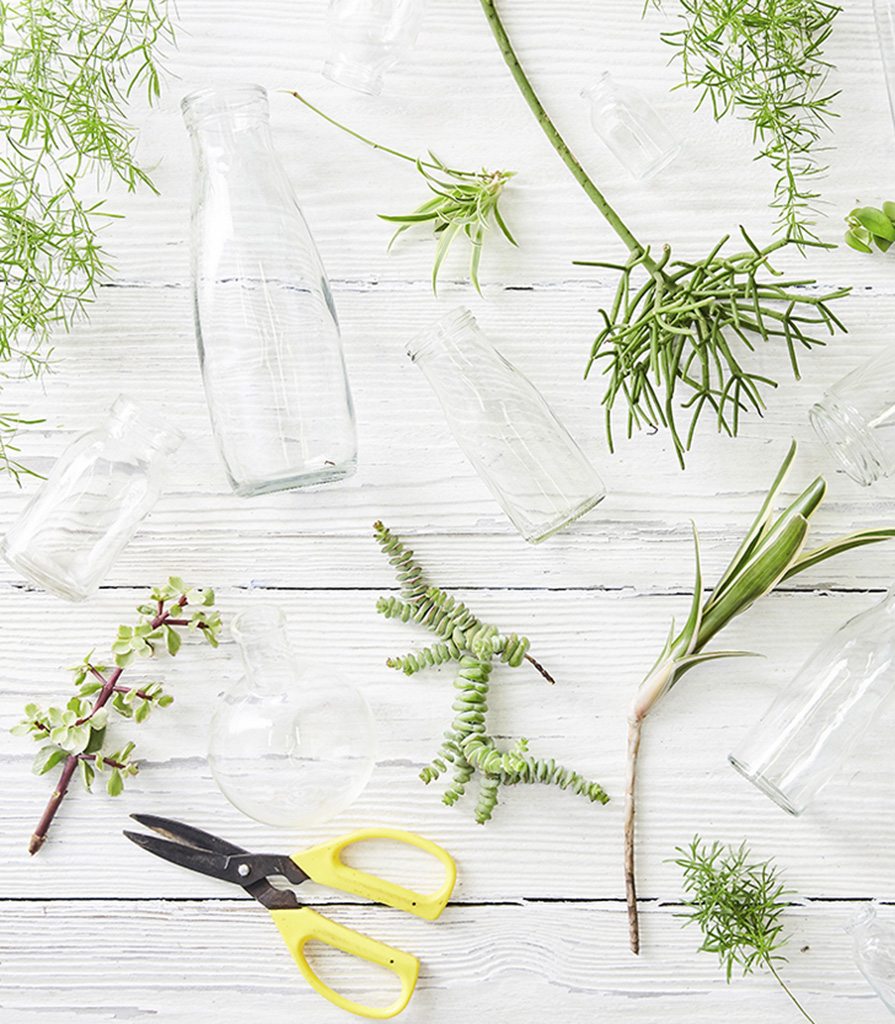
Propagating houseplants is a highly addictive but healthy hobby.
REMOVING OFFSETS
An offset is a baby plant. Offets that are produced at the base of the plant can be cut off when plants are repotted in spring and used for propagation. A good example is the bromeliad.
YOU WILL NEED Clean penknife • Hormone rooting powder (optional) • Sifted potting mix with perlite • Container • Short stake • String • Watering can
Growing And Maintaining | RAISING FROM SEEDS, OFFSETS, AND DIVISION
HOW TO GROW PLANTS FROM OFFSETS

1 Wait until the offsets are one-third the size of the parent plant. Carefully remove the parent plant from its pot.
Growing And Maintaining | RAISING FROM SEEDS, OFFSETS, AND DIVISION
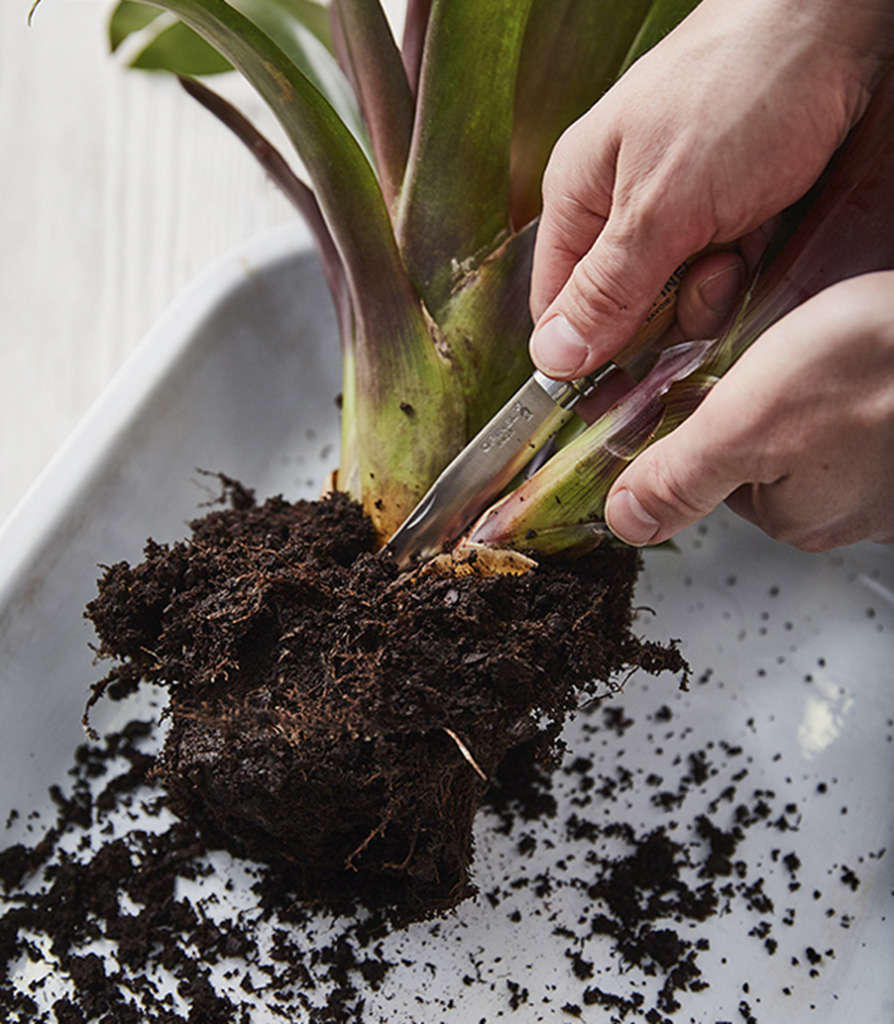
2 Remove loose potting mix from the root ball. Use a penknife to cut off the offsets as close as possible to the parent plant.
Growing And Maintaining | RAISING FROM SEEDS, OFFSETS, AND DIVISION
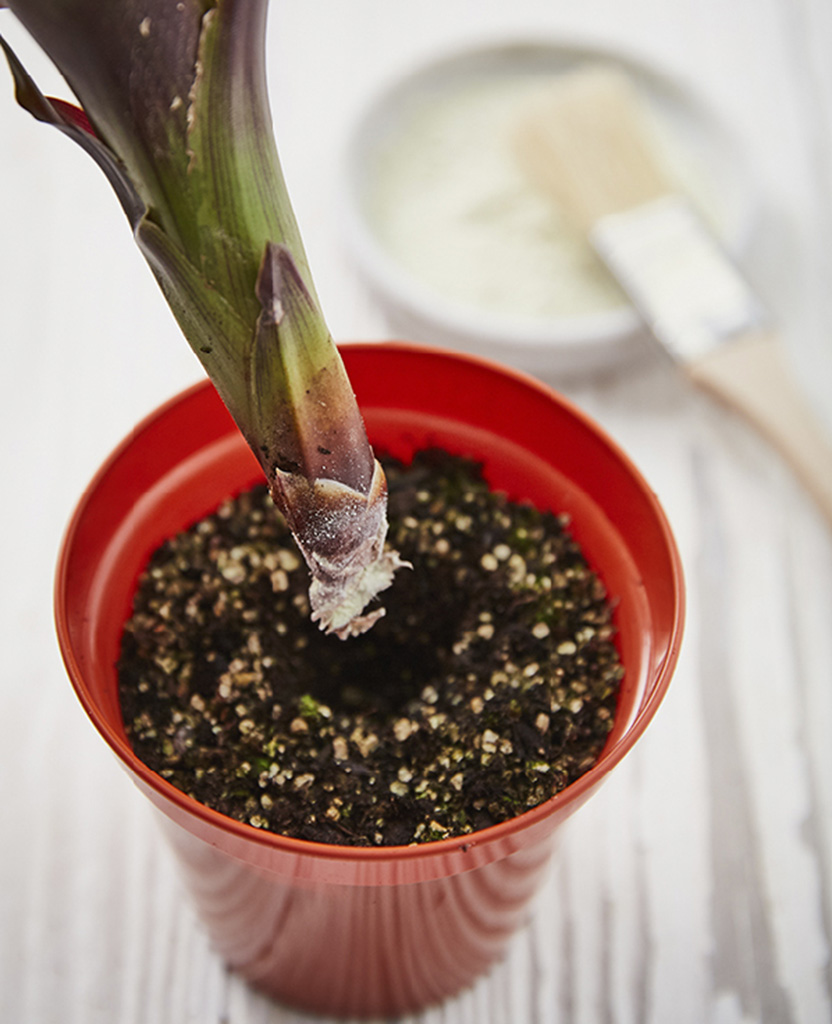
3 Dust the end of the offset with hormone rooting powder (optional). Push the offset into a container of pre-watered potting mix. It’s normal for offsets to have no roots at this stage. Don’t push the plant in too deeply or it will rot.
Growing And Maintaining | RAISING FROM SEEDS, OFFSETS, AND DIVISION

4 Give the plant the support of a stake if it topples and place in a room with filtered sunlight. Expect to see signs of growth in approximately six weeks.
POTTING HANGING OFFSETS
Plants that produce plantlets (hanging offsets) held on the end of long stems are extremely easy to propagate. Spider plants and creeping saxifrage are among the plants that propagate in this way. Choose an offset with healthy foliage and signs of roots growing at the base.Fill a pot with sifted potting mix and push the offset into it, although not too deeply. Make sure it’s still firmly attached to the parent. Leave it attached until you see signs of healthy new growth, then cut it free.
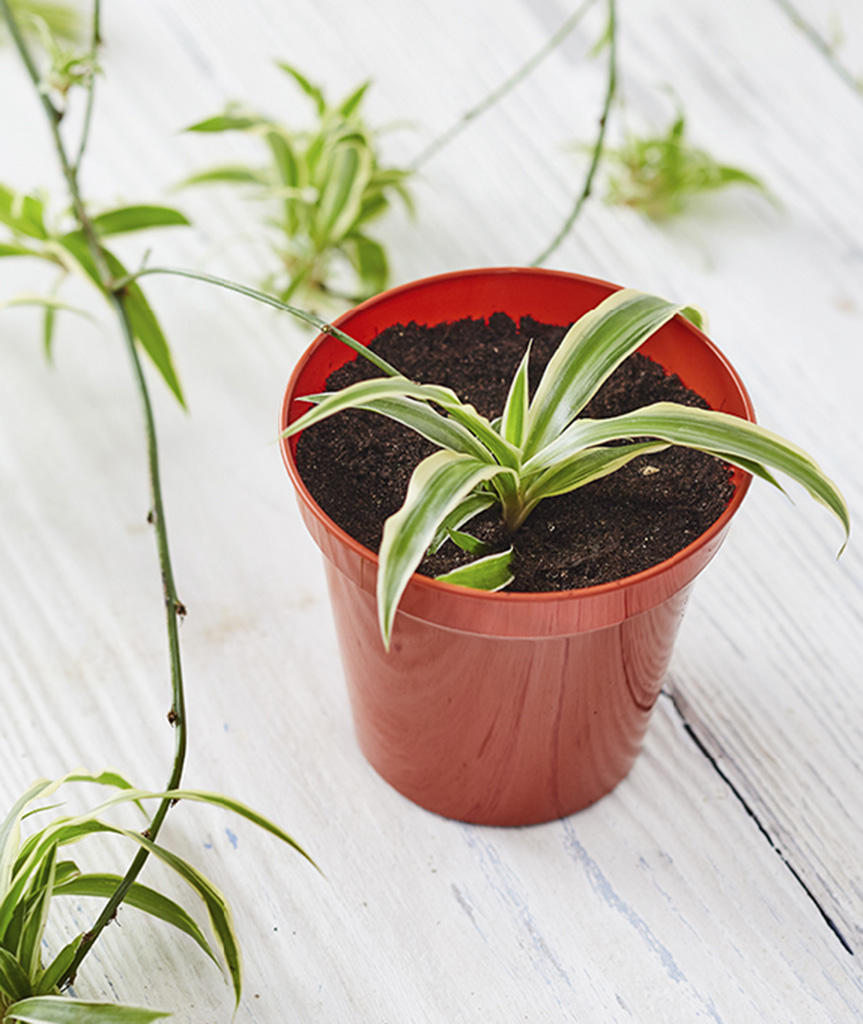
To speed up root growth, offsets are left attached to the parent plant.
DIVIDING PLANTS
The quickest way to produce new plants is to divide mature specimens. Plants that have fibrous roots and produce new stems readily such as the rattlesnake plant are good candidates.
Water the plant well and leave for an hour, then gently slide the plant out of its container and remove any loose potting mix. Carefully tease the plant roots apart to make two or three separate plants. Make sure each one has a good portion of the roots. If the roots are very tightly packed, you may need a sharp knife to cut through them. Repot each plant separately, ensuring they’re potted at the same level as in their previous pot. Water well and place in a room that has filtered sunlight.
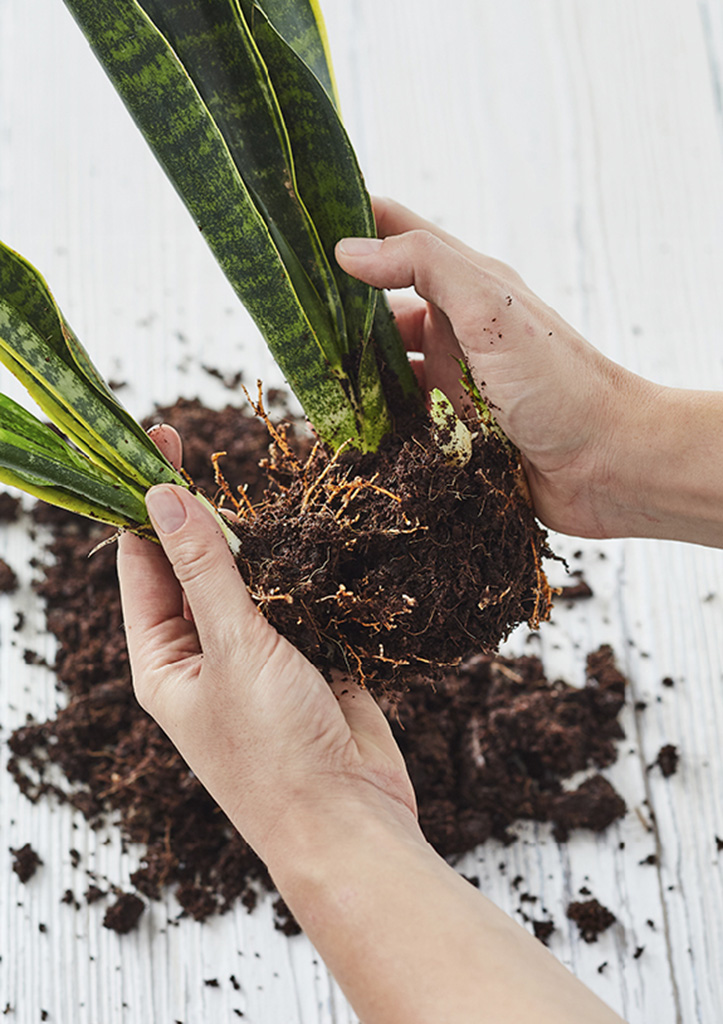
Tease apart the parent plant, making sure each part has a good section of root.
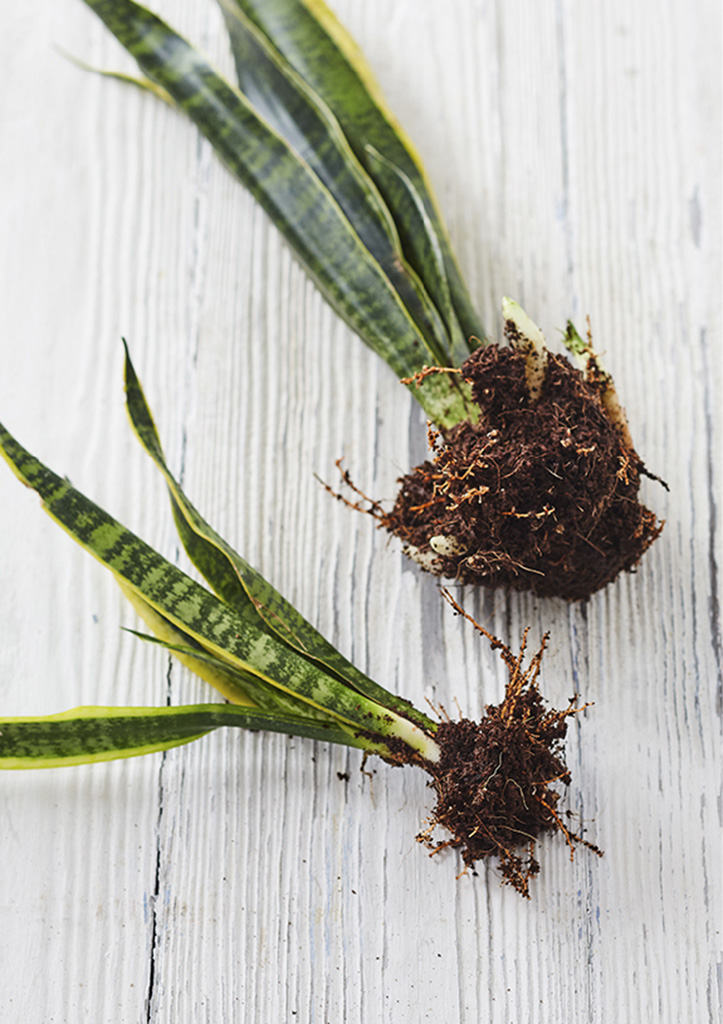
For success, only divide mature plants that have a generous root system.
GROWING FROM SEEDS
Growing plants from seeds is the quickest, easiest, and most cost-effective way of propagating a large quantity of houseplants that are grown as annuals, such as coleus.
The technique may differ slightly for each type of plant, but the basics remain the same. Fill a pot or seed tray with seed-starting mix; level it out, tamp it down slightly, and water with a can that has a rose. Place the seeds evenly on the surface. Cover them with a thin layer of potting mix (depth will vary according to seed). Place clear plastic over the top and keep at the recommended temperature in a room that has filtered sunlight.
Once the first leaves emerge, move seedlings to individual pots or cells. Make holes in the potting mix for their roots, then plant the seedlings in it. Place in a room with filtered sun, where they’ll develop into mature plants.

Spend time preparing an even seed bed before sowing.
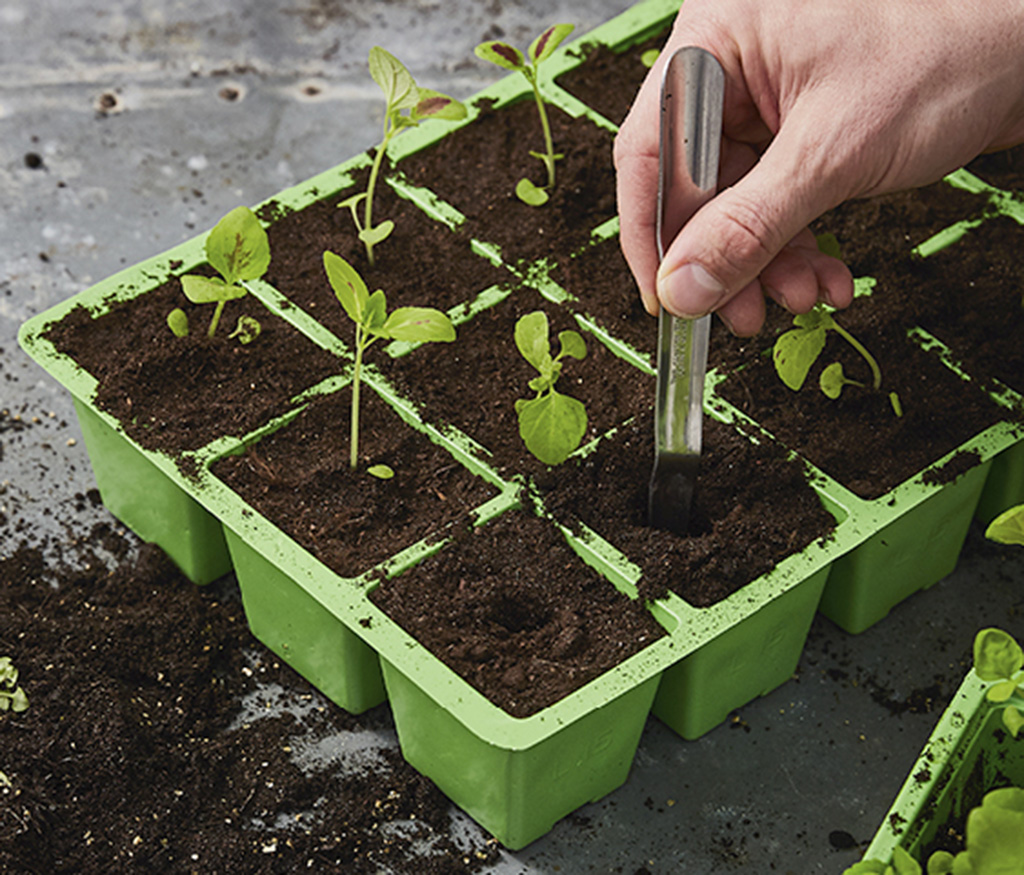
When moving seedlings to cells, hold them by the leaf, never the stem.
